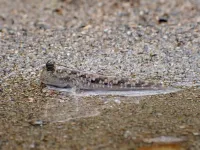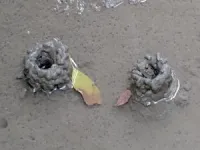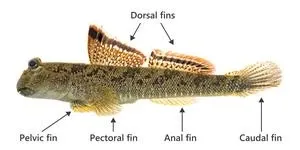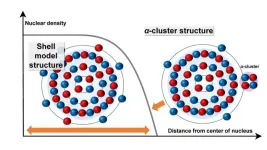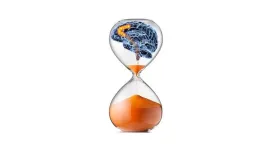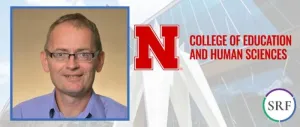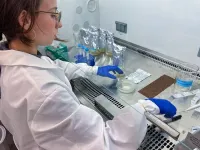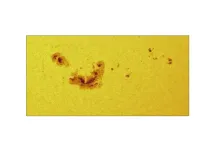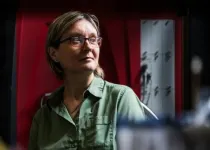(Press-News.org) Okinawa’s mangrove forests are home to many animal species, from crabs to kingfishers; they host a diverse ecosystem teeming with life. Among the quirkier residents living there is “Minami-Tobihaze” — the barred mudskipper. “They are fish, but they can walk and live partly on land,” says Dr. Fabienne Ziadi-Künzli from the Nonlinear and Non-equilibrium Physics Unit, who is the first author of a study on mudskipper anatomy, which was recently published in the Journal of Anatomy.
Adapting to a new life
The barred mudskipper, scientifically called Periophthalmus argentilineatus, has more than just one oddity. Their eyes sit more on top than on the side of their heads, and despite having no lungs, these fish can breathe air. “Mudskippers take up oxygen via their skin, which they always have to keep moist, or through their mouth,” says Dr. Ziadi-Künzli. Sometimes, they even swallow a big mouthful of air and hold it there to bring it to their eggs. “They dig burrows in the mud and blow out the air inside to ensure their eggs get enough oxygen,” explains Dr. Ziadi-Künzli.
Yet their probably most astounding adaptation to life on land is the ability to walk. "Our ancestors developed limbs and digits before they left the water, but we don't see this in these fish. Mudskippers are amphibious and still have fins that function for both swimming and walking,” says Dr. Ziadi-Künzli. To move on land, the mudskippers mainly use the fins attached to the side of their bodies, which are called pectoral fins.
“Mudskippers have a unique way of moving, which has not been seen in any other living amphibious fish species. It is called crutching,” says Dr. Ziadi-Künzli. Instead of moving their pectoral fins alternately, like humans use their legs when walking, the mudskippers swing their pectoral fins forward simultaneously, as we might do with crutches to take the weight off an injured leg.
A snapshot of evolution in progress
"It is kind of thrilling to think about these fish and how they walk. After Prof. Mahesh Bandi and his colleagues finished a study on how the specific shape of the human foot gives it the necessary stability to walk, we started wondering what morphological adaptations to movement on land we might see when studying the fins of the amphibious mudskipper,” says Dr. Ziadi-Künzli. Driven by her scientific interest as a fish biologist, she delved into the literature on the topic.
Surprisingly, the last in-depth anatomical study on mudskipper fins was done in the 1960s and information about adaptations of the mudskipper's muscles and other soft tissues to life on land was scarce. With her experience in anatomical studies and access to micro-computed tomography (µCT) within the OIST Core Facilities, she and her colleagues decided to investigate the mudskippers' adaptations to life outside of the water themselves.
“The µCT has an x-ray source and a microscopic detector that picks up the signal. Because we were interested in soft tissue, we used iodine to give the soft tissue a better contrast on the images,” explained Dr. Ziadi-Künzli. With this method, the team imaged various fish, starting with the mudskipper and its close evolutionary relatives. For comparison, the researchers also scanned other fish, for example the zebrafish, which are only distantly related to the mudskipper.
With the initial imaging complete, the hardest part of the study was about to begin: The analysis of the thousands of separate images produced by the µCT. “We had to manually sort through all those images to identify each tissue. Basically, we have been working on the analysis since 2019,” notes Dr. Ziadi-Künzli. The researcher’s tedious work eventually proved worthwhile when the first 3D images of the mudskippers revealed several unique adaptations to life outside of the water. “We found that their muscles in the pectoral fins are bigger, and the same is true for the shoulder girdle to which they attach,” says Dr. Ziadi-Künzli.
The researchers were even more amazed when they discovered that in the mudskipper's pectoral fins, the ones they use to walk, some bone-connecting tendons were replaced by fascia tissue. “We think this is an adaptation that helps the mudskippers to push themselves forward during walking because the fascia tissue gives more stability and might help to create the strength needed to move their mass on land,” explained Dr. Ziadi-Künzli.
The higher intensity of gravity on land seems to have caused another adaptation in the mudskipper's bodies, “there is a connection between the shoulder and the pelvic fin through a kind of joint that we don't see in any other fish we scanned,” says Dr. Ziadi-Künzli. These changes hint at how severe the evolutionary pressure might be when organisms transition from water to land.
And the bones did not remain unaffected in the mudskipper either, whose fins need to carry much more weight while walking than swimming. “Usually pectoral fin rays are crescent-shaped if you look at a cross-section but, in the mudskipper, they were round near the fin ray base and then changed to crescent shape towards the tip of the fin ray. "We think this might give the fin more mechanical stability,” says Dr. Ziadi-Künzli. Other researchers have described similar shapes of fin ray bones, some fossils of extinct fish that were ancestors to land-walking animals.
All these discoveries left the team itching to dive even deeper into understanding the mudskipper’s evolution, “when the mudskippers are in their larval state, they look no different from many other goby fish larvae, but during metamorphosis, they change their body and fin anatomy rapidly. We want to look at this development from larvae to adults to understand this transition better,” says Dr. Ziadi-Künzli.
For these future tasks, Dr. Ziadi-Künzli and co-author Dr. Ken Maeda, who is a staff scientist in the Marine Eco-Evo-Devo Unit, set up a cross-laboratory collaboration to study the mudskipper metamorphosis from larvae to adult fish. “Using these virtual dissection tools gives us a whole new perspective on the anatomy of animals – which is important work. After all, how shall we understand an organism and its evolutionary adaptations if we don't know how they are built?” says Dr. Ziadi-Künzli.
END
To walk, you only need fins (and maybe a sense of adventure)
A recent anatomical study of the mudskipper reveals their adaptations to walking on land.
2024-07-19
ELSE PRESS RELEASES FROM THIS DATE:
Come closer: titanium-48’s nuclear structure changes when observed at varying distances
2024-07-19
The world around us is made up of particles invisible to the naked eye, but physicists continue to gain insights into this mysterious realm. Findings published in Physical Review C by Osaka Metropolitan University researchers show that the nuclear structure of an atom likely changes depending on the distance the protons and neutrons are from the center of the nucleus.
OMU graduate student Maito Okada, Associate Professor Wataru Horiuchi, and Professor Naoyuki Itagaki from the Graduate School of Science compared calculations using theoretical models with existing experimental data to determine whether titanium-48, the most common isotope of titanium with 22 protons and 26 neutrons, ...
Good timing: UNLV study unravels how our brains track time
2024-07-19
Ever hear the old adage that time flies when you’re having fun? A new study by a team of UNLV researchers suggests that there’s a lot of truth to the trope.
Many people think of their brains as being intrinsically synced to the man-made clocks on their electronic devices, counting time in very specific, minute-by-minute increments. But the study, published this month in the latest issue of the peer-reviewed Cell Press journal Current Biology, showed that our brains don’t work that way.
By analyzing changes in brain activity patterns, the research team ...
Positive and negative impacts of interfacial hydrogen bonds on photocatalytic hydrogen evolution
2024-07-19
Photocatalytic hydrogen evolution from water is a key technology for achieving sustainable hydrogen production. However, the direct impact of the microscopic structure of interfacial water molecules on photocatalytic reactivity remains unexplored. In this study, the crucial roles of interfacial hydrogen bond structure and dynamics, as well as the optimal interfacial water environment for promoting H2 evolution were uncovered. These findings provide molecular-level insights that can guide the design of interfacial water conditions to enhance photocatalytic performance.
Hydrogen production via photocatalytic water splitting is a sustainable ...
SynGAP Research Fund (SRF) continues support for exosome research for SYNGAP1-Related Disorders (SRD) in the lab of Professor Janos Zempleni of the University of Nebraska-Lincoln
2024-07-19
Mill Valley, CA – July 10, 2024 – The SynGAP Research Fund 501(c)(3) announces a $190,636 grant, for work to be done in 2024 and 2025, to Professor Janos Zempleni, PhD of the University of Nebraska-Lincoln, to establish data required for regulatory approval for his novel treatment using an engineered version of naturally-occurring particles called exosomes. His first grant from SRF established the engineered changes required to accumulate exosomes in the brain. SRF is pleased to support the continued development of a non-invasive and targeted delivery system for therapeutics ...
Food research fellowships funded for scientists in 6 countries
2024-07-19
DALLAS, July 18, 2024 — Diet-related diseases account for 1 in 5 deaths around the world[1] and unsustainable industrial agricultural practices threaten to compromise the health of the planet.[2] While emerging science expands our knowledge of food composition, society still understands little about the tens of thousands of components found in food.
The American Heart Association is facilitating a new research fellowship program from the Periodic Table of Food Initiative (PTFI) with support from The Rockefeller Foundation. The program, called Good Food Fellows, aims to train a new ...
Illinois studies explore converting wastewater to fertilizer with fungal treatment
2024-07-19
URBANA, Ill. – Creating fertilizers from organic waste can help reduce the consumption of fossil fuels and promote sustainable production. One way of doing this is through hydrothermal liquefaction (HTL), which converts biomass into biocrude oil through a high-temperature, high-pressure process. Two studies from the University of Illinois Urbana-Champaign explore the use of a fungal treatment to convert the leftover wastewater into fertilizer for agricultural crops.
“HTL uses wet biomass from organic sources such as swine manure or food waste. The process yields wastewater, called hydrothermal liquefaction aqueous phase (HTL-AP), which is usually discarded. We ...
Time-lapse imaging for embryo selection in IVF does not improve the odds of live birth compared with conventional methods, according to largest study of its kind
2024-07-19
There is no difference in live birth rates between time-lapse imaging and other standard approaches used in in-vitro fertilisation (IVF) for embryo incubation and selection prior to implantation, according to the results of the largest trial of its kind.
The randomised controlled trial looked at IVF outcomes in the UK and Hong Kong. The results, published today in The Lancet, provide much-needed evidence that using time-lapse imaging (TLI) does not improve treatment outcomes for someone undergoing fertility treatment.
Time-lapse imaging is a technique ...
Early riser! The Sun is already starting its next solar cycle – despite being halfway through its current one
2024-07-19
Early riser! The Sun is already starting its next solar cycle – despite being halfway through its current one
Royal Astronomical Society press release
RAS PR 24/21 (NAM 7)
Embargoed until 00:01 BST on Friday 19 July 2024
The first rumblings of the Sun's next 11-year solar cycle have been detected in sound waves inside our home star – even though it is only halfway through its current one.
This existing cycle is now at its peak, or 'solar maximum' - which is when the Sun’s magnetic field flips and its poles swap places - until mid-2025.
It affects ...
Oakland hospital building is approved for construction
2024-07-19
Subscribe to UCSF News
Note to Editors: Photos and renderings are available in our Media Kit
UC Regents sign off on $1.5 billion project to construct a new hospital building at UCSF Benioff Children’s Hospital Oakland, securing the future of world-class pediatric facilities in the East Bay.
UCSF Benioff Children’s Hospitals has received final approval on a $1.49 billion hospital building on its Oakland campus that will provide a state-of-the-art, child-centered medical facility for families across the Bay Area. The proposal was approved ...
Rice’s Emilia Morosan awarded prestigious Vannevar Bush Faculty Fellowship
2024-07-18
Rice University’s Emilia Morosan has been selected as one of 11 scientists and engineers for the 2024 Vannevar Bush Faculty Fellowship (VBFF) to support her work on correlated topological materials. The fellowship is the Department of Defense’s (DoD) most prestigious single-investigator award and supports groundbreaking basic research with the potential to transform various fields.
The VBFF, a five-year fellowship with up to $3 million in funding, encourages innovative ideas where researcher creativity intersects with the unknown. Vannevar Bush Fellows represent a cadre of experts who provide invaluable direction to the DoD ...
LAST 30 PRESS RELEASES:
Securing AI systems against growing cybersecurity threats
Longest observation of an active solar region
Why nail-biting, procrastination and other self-sabotaging behaviors are rooted in survival instincts
Regional variations in mechanical properties of porcine leptomeninges
Artificial empathy in therapy and healthcare: advancements in interpersonal interaction technologies
Why some brains switch gears more efficiently than others
UVA’s Jundong Li wins ICDM’S 2025 Tao Li Award for data mining, machine learning
UVA’s low-power, high-performance computer power player Mircea Stan earns National Academy of Inventors fellowship
Not playing by the rules: USU researcher explores filamentous algae dynamics in rivers
Do our body clocks influence our risk of dementia?
Anthropologists offer new evidence of bipedalism in long-debated fossil discovery
Safer receipt paper from wood
Dosage-sensitive genes suggest no whole-genome duplications in ancestral angiosperm
First ancient human herpesvirus genomes document their deep history with humans
Why Some Bacteria Survive Antibiotics and How to Stop Them - New study reveals that bacteria can survive antibiotic treatment through two fundamentally different “shutdown modes”
UCLA study links scar healing to dangerous placenta condition
CHANGE-seq-BE finds off-target changes in the genome from base editors
The Journal of Nuclear Medicine Ahead-of-Print Tip Sheet: January 2, 2026
Delayed or absent first dose of measles, mumps, and rubella vaccination
Trends in US preterm birth rates by household income and race and ethnicity
Study identifies potential biomarker linked to progression and brain inflammation in multiple sclerosis
Many mothers in Norway do not show up for postnatal check-ups
Researchers want to find out why quick clay is so unstable
Superradiant spins show teamwork at the quantum scale
Cleveland Clinic Research links tumor bacteria to immunotherapy resistance in head and neck cancer
First Editorial of 2026: Resisting AI slop
Joint ground- and space-based observations reveal Saturn-mass rogue planet
Inheritable genetic variant offers protection against blood cancer risk and progression
Pigs settled Pacific islands alongside early human voyagers
A Coral reef’s daily pulse reshapes microbes in surrounding waters
[Press-News.org] To walk, you only need fins (and maybe a sense of adventure)A recent anatomical study of the mudskipper reveals their adaptations to walking on land.
